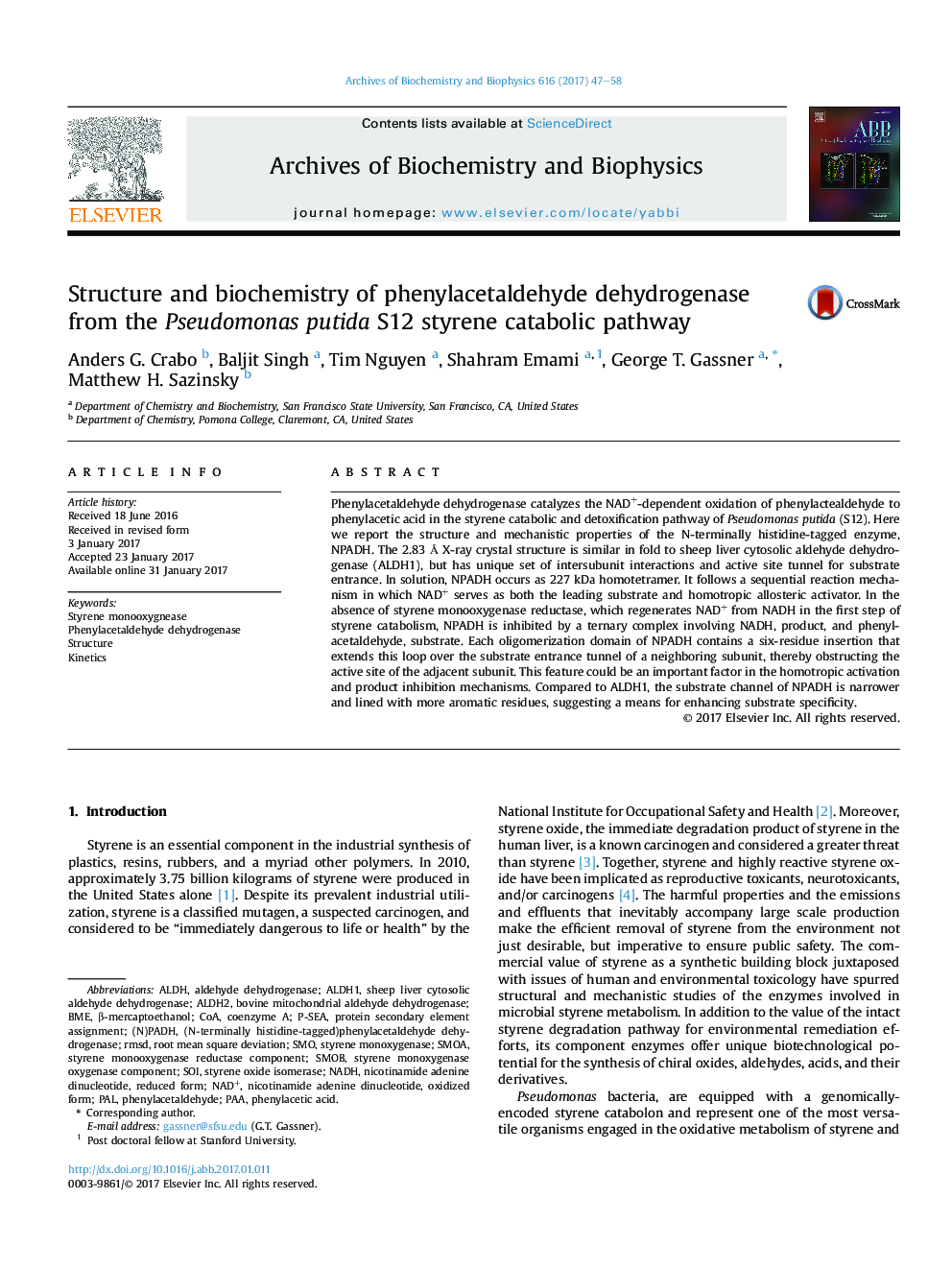| کد مقاله | کد نشریه | سال انتشار | مقاله انگلیسی | نسخه تمام متن |
|---|---|---|---|---|
| 5504469 | 1536287 | 2017 | 12 صفحه PDF | دانلود رایگان |
عنوان انگلیسی مقاله ISI
Structure and biochemistry of phenylacetaldehyde dehydrogenase from the Pseudomonas putida S12 styrene catabolic pathway
دانلود مقاله + سفارش ترجمه
دانلود مقاله ISI انگلیسی
رایگان برای ایرانیان
کلمات کلیدی
ALDHSMOSOIPAAALDH2RMSDPALALDH1COABMENAD+ - NAD +β-mercaptoethanol - β-merkaptoethanolaldehyde dehydrogenase - آلدئید دهیدروژنازStyrene oxide isomerase - استایرن اکسید ایزومرازPhenylacetic acid - اسید فینسیلیکStructure - ساختار یا سازهKinetics - سینتیک (جنبش شناسی) Phenylacetaldehyde - فنیل اتلدئیدroot mean square deviation - میانگین انحراف مربع ریشهNADH - نادانnicotinamide adenine dinucleotide, reduced form - نیکوتین آمید adenine dinucleotide، فرم کاهش یافته استcoenzyme A - کوآنزیم A
موضوعات مرتبط
علوم زیستی و بیوفناوری
بیوشیمی، ژنتیک و زیست شناسی مولکولی
زیست شیمی
پیش نمایش صفحه اول مقاله

چکیده انگلیسی
Phenylacetaldehyde dehydrogenase catalyzes the NAD+-dependent oxidation of phenylactealdehyde to phenylacetic acid in the styrene catabolic and detoxification pathway of Pseudomonas putida (S12). Here we report the structure and mechanistic properties of the N-terminally histidine-tagged enzyme, NPADH. The 2.83Â Ã
X-ray crystal structure is similar in fold to sheep liver cytosolic aldehyde dehydrogenase (ALDH1), but has unique set of intersubunit interactions and active site tunnel for substrate entrance. In solution, NPADH occurs as 227Â kDa homotetramer. It follows a sequential reaction mechanism in which NAD+ serves as both the leading substrate and homotropic allosteric activator. In the absence of styrene monooxygenase reductase, which regenerates NAD+ from NADH in the first step of styrene catabolism, NPADH is inhibited by a ternary complex involving NADH, product, and phenylacetaldehyde, substrate. Each oligomerization domain of NPADH contains a six-residue insertion that extends this loop over the substrate entrance tunnel of a neighboring subunit, thereby obstructing the active site of the adjacent subunit. This feature could be an important factor in the homotropic activation and product inhibition mechanisms. Compared to ALDH1, the substrate channel of NPADH is narrower and lined with more aromatic residues, suggesting a means for enhancing substrate specificity.
ناشر
Database: Elsevier - ScienceDirect (ساینس دایرکت)
Journal: Archives of Biochemistry and Biophysics - Volume 616, 15 February 2017, Pages 47-58
Journal: Archives of Biochemistry and Biophysics - Volume 616, 15 February 2017, Pages 47-58
نویسندگان
Anders G. Crabo, Baljit Singh, Tim Nguyen, Shahram Emami, George T. Gassner, Matthew H. Sazinsky,